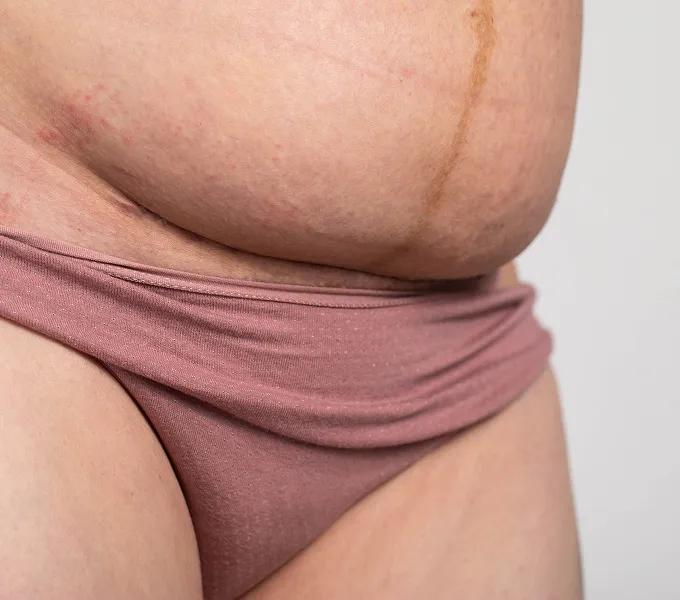
Postpartum Exercise: Read This Before You Start Running (or Any Kind of Workout)
If you're postpartum and dying to get back to your favorite running route, HIIT class, weight room, or yoga studio, we have some unwelcome words of caution (sorry): It's critical that you don't rush back in.
Consider what your body has gone through during pregnancy:
- As your belly and breasts grew, your center of gravity pulled forward and the curvature of your spine changed, shifting the position of both your pelvis and your head.
- Some muscles (including your back and core) became stretched and weak, while others (like your hip flexors and pecs) become shortened and tight.
- Your ribs and the joints of your feet and pelvis have all been pushed to their limits.
And that’s not even taking into consideration any strain or injuries you may have experienced during childbirth.
Your postpartum body is incredibly resilient and adaptive, but it needs time to heal and very gradually regain strength and coordination. Exercise too quickly or intensely, and you’ll not only disrupt your recovery process, you'll very likely create new injuries and imbalances that could negatively impact you for months or years to come.
To help you make informed decisions about exercise, we’ve created an On-Demand course that includes essential information about how to return safely to your favorite forms of exercise.
Below is just a small excerpt of what you’ll find in the class. If you have any questions, concerns, existing injuries, or other special needs, reach out to a physical therapist to help get you on the right track.
When is it Safe to Return to Exercise Postpartum?
There’s one thing that all postpartum experts agree on: Rest and recovery is the most important goal during the first 6-8 weeks immediately postpartum. Sometimes, more time is needed to heal from childbirth — your OB will let you know if that’s the case for you.
Exercise during your first 6 weeks is not recommended. Instead, use this time to rest and allow your body to heal while shifting your attention to forming good habits including having good body mechanics and posture with your new everyday tasks.
So when is it safe to start exercising again? While there’s a decent amount of research confirming the positive impact of exercise before, during, and after pregnancy, there isn’t much research in support of a specific timeline for returning to exercise postpartum. This is very likely due to the fact that pregnancy and delivery are extremely different for everyone and so recovery times can vary enormously.
And, more and more, people who are postpartum are not just returning to walking, but to a number of other exercises and activities that research may not have considered yet, like Crossfit and rock climbing. As you can imagine, the type of exercise you want to do will impact how quickly you can get back to it.
Below is some activity-specific advice. If your favorite form of exercise isn’t listed below, consider working with a PT who specializes in postpartum care.
When is it safe to return to running postpartum?
The general recommendation is to avoid running before 12 weeks postpartum. If you have pain or injuries, that timeline might be even longer. Why so long? In order to run, your physical body needs to have good postural awareness, cardiovascular endurance, and muscle strength.
Once you're cleared by your OB to resume activity (at around 6 weeks) you can start to prepare your postpartum body for running:
- Start with a walking, biking, or swimming program to increase your cardiovascular endurance without compromising your recovery.
- Build back your legs, pelvic floor, and core strength with mat or resistance exercises targeting each of these groups.
- Restore your postural awareness and endurance by practicing good body mechanics with everyday activities and childcare tasks.
By taking a few weeks to build up your muscle strength, cardiovascular endurance, and postural support, you are setting yourself up for success when you finally lace up those running shoes again.
How do you know if your body is ready for running? One screening that you can perform to be sure your muscles are strong enough for running includes:
- Side Planks - 2 mins on each side
- Single-leg calf raises - 20 times on each side
- Single-leg bridges - 20 times on each side
- Single-leg sit to stands - 20 times on each side
- Side-lying hip abductions - 20 times on each side
If you find any one of these exercises difficult or if you fatigue before 20 repetitions, try to incorporate that exercise into a regular routine. You will likely need to rebuild strength in that muscle group before returning to running.
Once you reach 12 weeks, the guidance is to slowly return to your prior running distance and pace. For more information on how to do that, check out our Motherly class.
When is it Safe to Return to Weightlifting Postpartum?
Weightlifting can include body weight, light weights in your home gym or access to a complete set of heavy weights, kettlebells, and machines at your local gym, but the more weight you lift, the more consideration you will need to take in your return to lifting.
As you might guess, returning to weightlifting does not have the same demands as returning to running. In running, you are training your body to tolerate moderate to high-impact repetitive motions for prolonged periods. With weightlifting, your body is typically stationary, so there is little impact but the load you are lifting is increasing and this comes with its own set of challenges.
Before being cleared to return to exercise by your OB, the recommendation is not to lift more weight than your baby.
This is a great time to practice good postural awareness, good core activation, and good spine and shoulder stability with everyday childcare tasks, like lifting and lowering your baby from a crib. For detailed how-tos, see this blog post.
When you reach 6-8 weeks, this posture work should have prepared your back, arms, legs, and core for return to weights — but nowhere near your pre-pregnancy levels. Even with this preparation, the recommendation for this period is to use just your body weight or the weight of your baby.
Using a lighter weight will allow you to assess for any dysfunction, difficulty with movements and prevention of injury. Rather than building up weights, focus on developing good body mechanics, building up your endurance by completing several repetitions and sets, and working on your breathing pattern.
One of the greatest risks associated with weightlifting postpartum is poor management of intra-abdominal pressure. If you find yourself holding your breath with any exercise, this can lead to increased pressure on your pelvic floor and abdominal structures that are still healing following pregnancy and delivery.
After 12 weeks, as long as no symptoms or injury remain, it’s generally safe to gradually introduce more weight. See our Motherly class for detailed information and recommended exercises to prepare your body for lifting.
When is it Safe to Return to High Intensity Interval Training (HIIT) Postpartum?
This may be obvious but to get back into that HIIT class, you must be able to both run and jump and lift weights. These classes are great because they tend to have a good mix of cardio and targeted muscle exercise. But because they are so variable, the timeline here needs to consider the guidelines for returning to both running and weightlifting postpartum.
The main difference between these classes and simply running or weightlifting is that they tend to push you to keep a good pace. And they challenge your body sometimes to the point of exhaustion in order to increase your heart rate and improve your cardiovascular system, as well as your musculoskeletal system. The biggest risk here is that sometimes, during these classes, we can become so focused on just keeping up with the rest of the class that our form can suffer. But maintaining good form is key for preventing injury and for developing good habits.
If you choose to return to a HIIT or bootcamp workout soon after clearance to return to exercise by your OB, you should expect to make MANY modifications. Avoid jumping and instead substitute these exercises with something requiring less impact like lunges or squats. Consider pushups from your knees or at a wall rather than full pushups and avoid weights that are heavier than your baby.
For more information, see our Motherly class or consider working with a PT to get personalized advice.
When is it Safe to Return to Yoga Postpartum?
You may have been doing yoga for years or maybe just began your practice during your pregnancy or maybe it just feels like yoga is just what your body needs right now. Whatever your history, beginning yoga, like any sport, should still be a gradual process.
Before being cleared by your OB to exercise, consider beginning a walking and stretching program to maintain your joint and muscle flexibility before returning to yoga.
After 6-8 weeks postpartum and being cleared by their OB, many people find it helpful to first return to a prenatal yoga practice. Of course, you are welcome to return to any yoga class you would like but be prepared to make MANY modifications! Prenatal yoga classes tend to have modifications already built in and if this was the last type of yoga you were doing just before delivery, much of the session may be familiar to you, which can help with easing back into a routine.
Before trying another class, make sure your body is ready by monitoring for any symptoms or pain that may arise during your sessions. What is wonderful about yoga is that often the pace is moderate enough to allow you to constantly assess the quality of your movements, posture, and pose, make modifications as needed, or remember to breathe and incorporate your pelvic floor into your exercises.
For more info about returning safely to yoga, consider taking our Motherly class. Or see a postpartum physical therapist who can tailor a recovery program to meet your needs exactly. Working with a physical therapist for support in rehabilitating your body will absolutely help get you back into exercise and achieve your postpartum goals!




